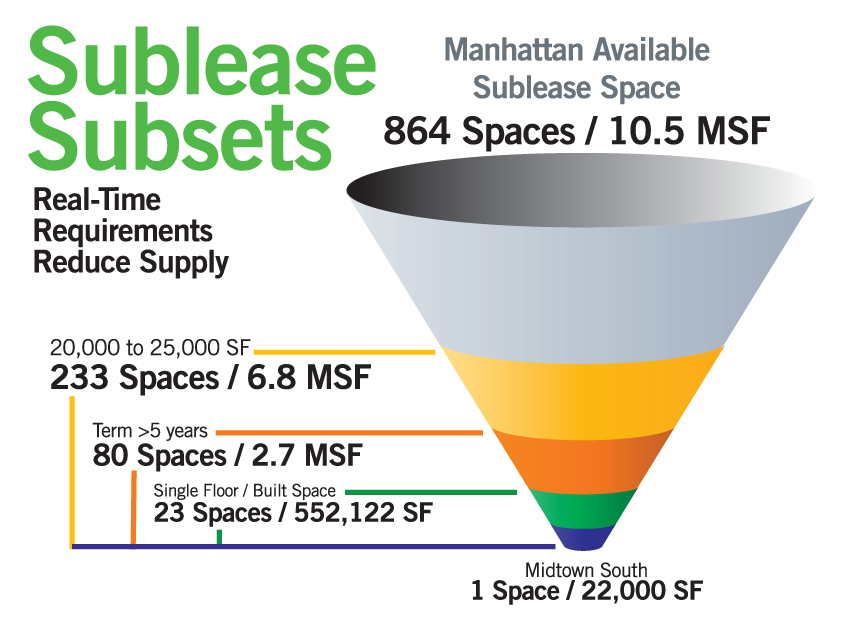Currently there are 10.5 million square feet of available sublease space on the market throughout Manhattan. While that sounds like a large number, when put in context of the 50 million square feet on the market, it only accounts for 21 percent of the total available supply.
 Historically, a ratio of 80 to 20 for direct and sublease available space dictated a healthy market, like in 1998-2000 and 2005-2007, while a ratio of 70 to 30 dictated a weak market during the down real estate cycles from 2001 to 2004 and 2008 to 2009. During these weaker cycles, discounted sublease rents put downward pressure on landlords’ pricing, as the discount between direct and sublet asking rents was 25 to 30 percent. In today’s market, the discount between direct and sublet average asking rents is only 10 to 15 percent.
Historically, a ratio of 80 to 20 for direct and sublease available space dictated a healthy market, like in 1998-2000 and 2005-2007, while a ratio of 70 to 30 dictated a weak market during the down real estate cycles from 2001 to 2004 and 2008 to 2009. During these weaker cycles, discounted sublease rents put downward pressure on landlords’ pricing, as the discount between direct and sublet asking rents was 25 to 30 percent. In today’s market, the discount between direct and sublet average asking rents is only 10 to 15 percent.
And with today’s value-driven tenants, that 10.5 million square feet of sublease space quickly becomes a smaller universe based on a tenant’s requirements. Taking a hypothetical requirement for a 20,000- to 25,000-square-foot sublease anywhere in Manhattan, the 864 sublease spaces very quickly drops to 233 totaling 6.8 million square feet. Does this tenant want to only consider spaces with five or more years remaining? That number drops further, to 80 spaces totaling 2.7 million square feet. Does your tenant want built space to save on up-front capital expenses and prefer to be on one floor? Now this hypothetical tenant has only 23 spaces totaling 552,122 square feet to consider. Of course, in our hypothetical scenario, we are not taking into account shorter subleases with a direct extension, but for the duration of this column, let me suspend at least a little bit of reality.
Not surprisingly, when one filters all the layers, only one space is available in Midtown South, the hottest of the three markets. Three are available Downtown and 19 in Midtown. Those sublease availability numbers don’t seem as big now, do they?
Richard Persichetti is the vice president of research, marketing and consulting at Cassidy Turley, with 14 years of NYC research experience.


